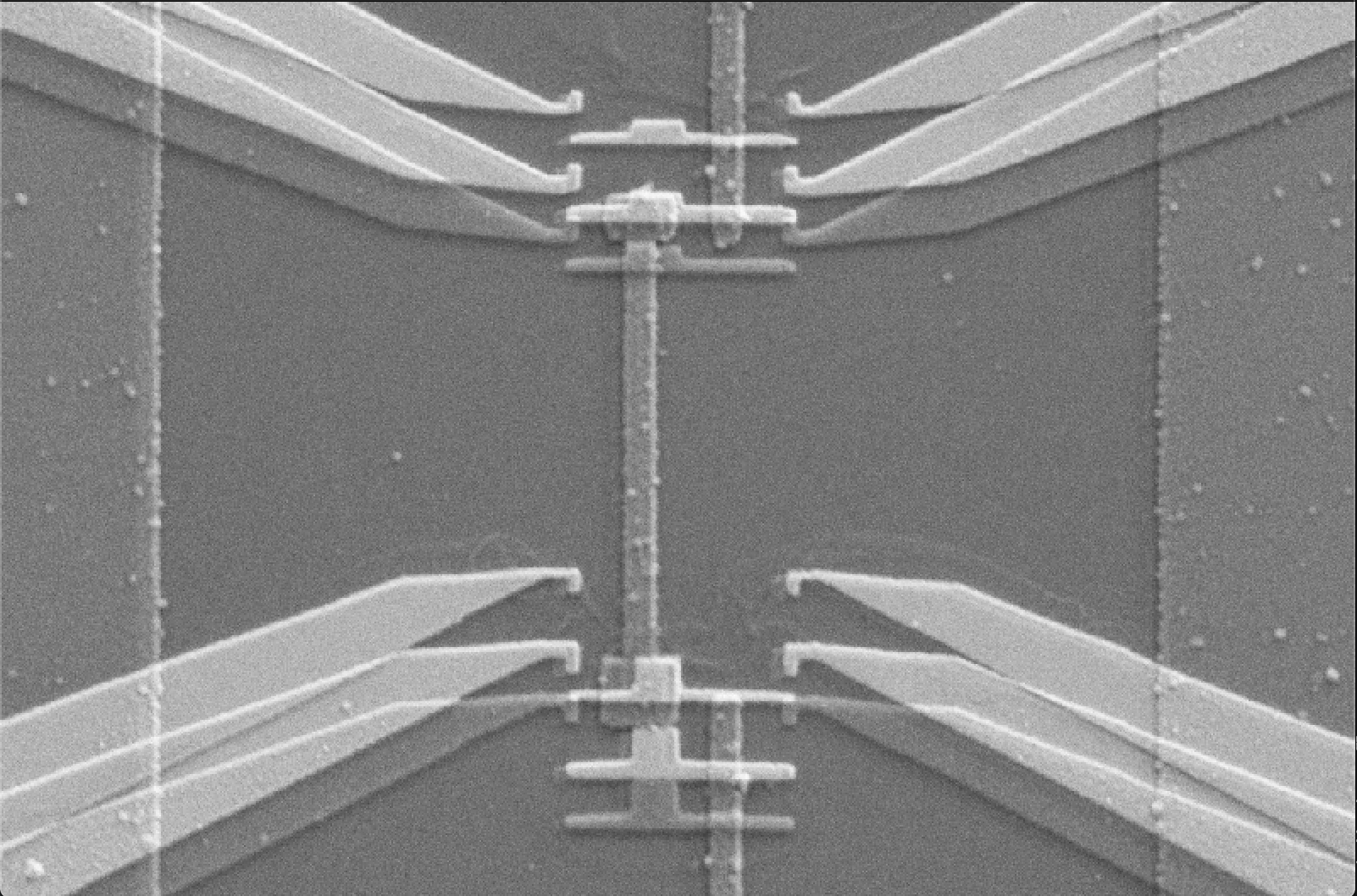The Gambler, Maxwell’s New Demon
According to the second law of thermodynamics, heat will always move from hot to cold until it is spread evenly and can’t be tapped to do useful work. Yet it is possible to subvert the second law briefly, as the 19th century thought experiment known as Maxwell’s demon demonstrates. Researchers have now come up with a new way to do this that requires minimal intervention in the system [1]. It involves finding good gambling strategies to exploit chance fluctuations in particle motions and extract useful work, and the team implemented their approach in a nanoscale electronic device. They say that the approach might be used to improve the efficiency of microscopic heat engines and motors.
In 1867, James Clerk Maxwell argued that there might be a way to beat the second law. He imagined a tiny being (a “demon”) that can selectively open a trapdoor between two compartments filled with gas at the same temperature to let faster moving (“hotter”) molecules go one way and let slower ones go the other way. Eventually this separation process creates a difference in temperature between the two compartments that could be tapped to do work—say, to power an engine. But Maxwell’s demon can’t beat the second law indefinitely because even the minimal information gathering it requires turns out to result eventually in overall dissipation of heat [2].
Many systems cannot be controlled at the level of individual molecules, so Gonzalo Manzano, of the International Centre for Theoretical Physics in Italy, and his colleagues wondered if there is a simpler strategy a demon can use to temporarily harvest energy that does not require such detailed control over particles. Suppose the trapdoor automatically opens and closes in a way that the demon can neither predict nor control. All it can do is look at how the process is going—has it been successfully separating hot and cold particles or not? Then it has just two choices: let the process continue or stop it and start again.
This demon must take a gamble akin to playing a slot machine. If you’ve had a series of wins, do you keep going and risk losing? When is the right time to quit? Manzano and colleagues show that winning (achieving a temporary net energy gain) in a given run is possible only if the sequence of trapdoor opening and closing is not symmetric in time, that is, if the sequence is not palindromic.
In general, the demon sets some threshold of performance (wins or losses) over a given time period that will tell it whether or not to stop. There’s no unique best gambling strategy, but some are better than others. “One way to develop successful strategies is to stop when things are somehow ‘getting bad,’ to avoid major losses,” says Manzano.
The researchers collaborated with nanoelectronics expert Jukka Pekola at Aalto University in Finland to make a device that implements their scenario. It consists of electrodes separated from a metallic island by a gap. When cooled to a fraction of a degree kelvin, individual electrons can jump between the island and the electrodes. A voltage applied to the island controls the chances of jumping and thus acts like a trapdoor. When an electron jumps onto the island, heat extracted from the electrode can be converted into work; conversely, when an electron jumps from the island to an electrode, heat is dissipated.
The researchers’ predictions for the relationship between the net work that can be extracted and the degree of time asymmetry in the “door-opening” protocol were born out by the experiment. Some “stopping” strategies could temporarily extract work, while others could not. (As with Maxwell’s demon, none beats the second law in the long term.)
Manzano says that their approach might be used to improve the performance of microscopic motors that aim to use information to “mine” random fluctuations in the environment, such as so-called thermal ratchets [3]. A quantum version of the scenario, which aims to extract work from random quantum jumps, might also be implemented in quantum heat engines [4].
The gambling demon is surprising in that it’s “opposite to other Maxwell demons, which are more efficient when the protocol is carried out reversibly,” says theoretical physicist Juan Parrondo of the University of Madrid. He says the gambling demon’s approach might be useful in real devices if it could be done automatically, since the idea is similar in concept to a standard atom cooling technique in which atoms with energies above a given threshold are removed.
–Philip Ball
Philip Ball is a freelance science writer in London. His latest book is How Life Works (Picador, 2024).
References
- G. Manzano et al., “Thermodynamics of gambling demons,” Phys. Rev. Lett. 126, 080603 (2021).
- E. Lutz and S. Ciliberto, “Information: From Maxwell’s demon to Landauer’s eraser,” Phys. Today 68, 30 (2015).
- R. Vale, “Protein motors and Maxwell’s demons: Does mechanochemical transduction involve a thermal ratchet?” Adv. Biophys. 26, 97 (1990).
- J. Klatzow et al., “Experimental demonstration of quantum effects in the operation of microscopic heat engines,” Phys. Rev. Lett. 122, 110601 (2019).







